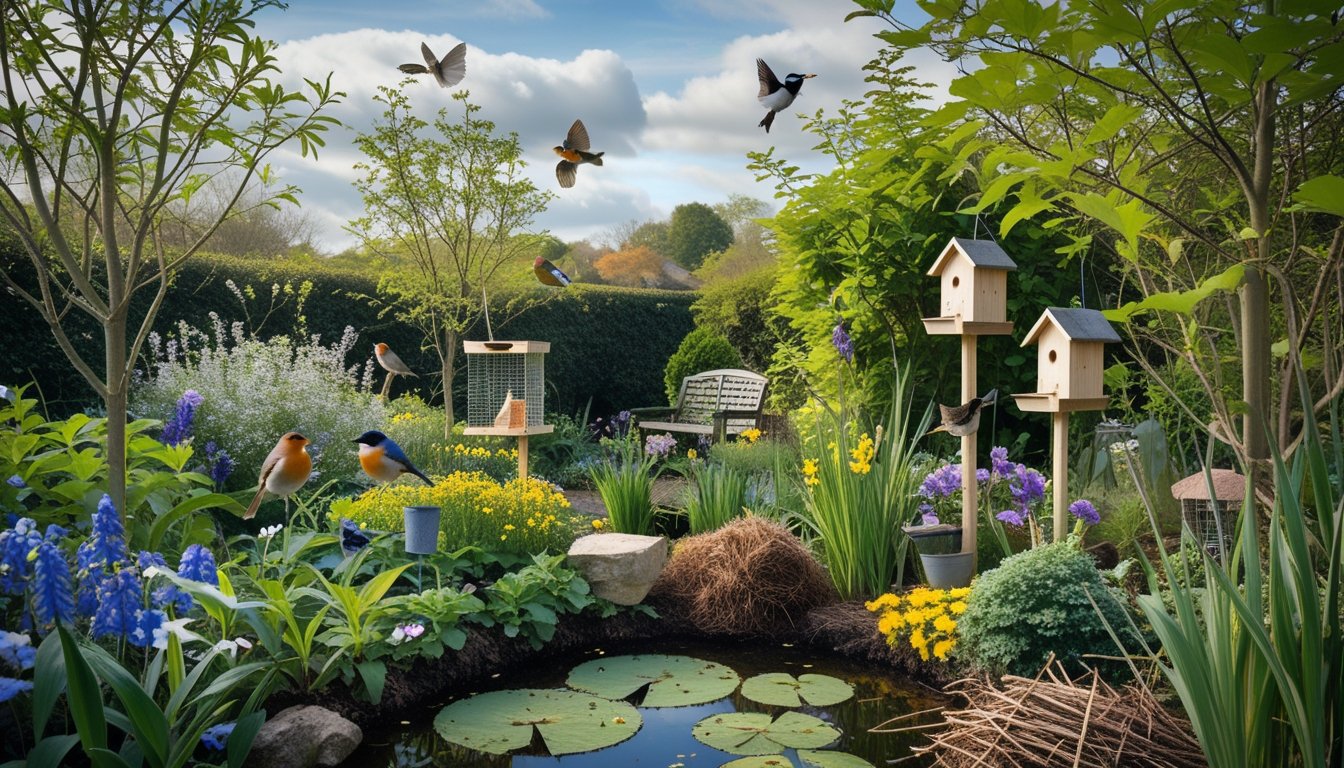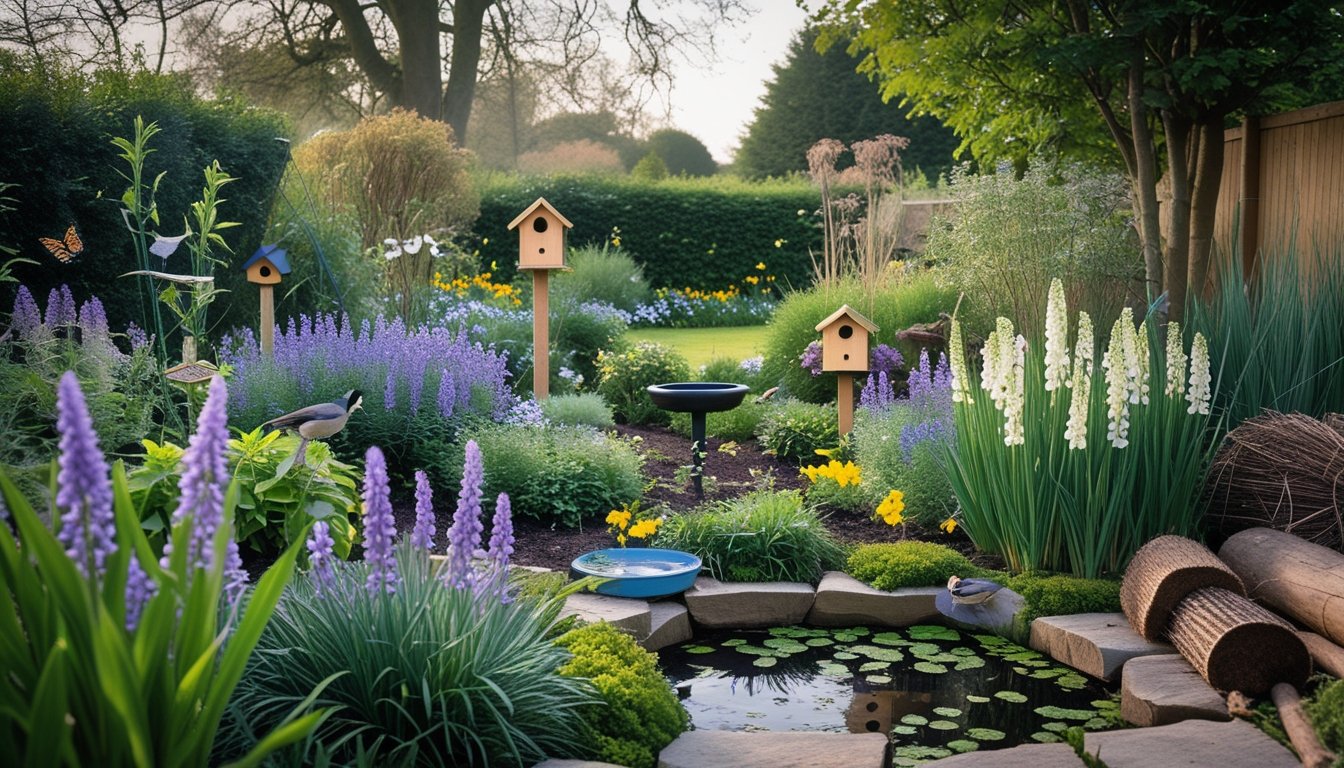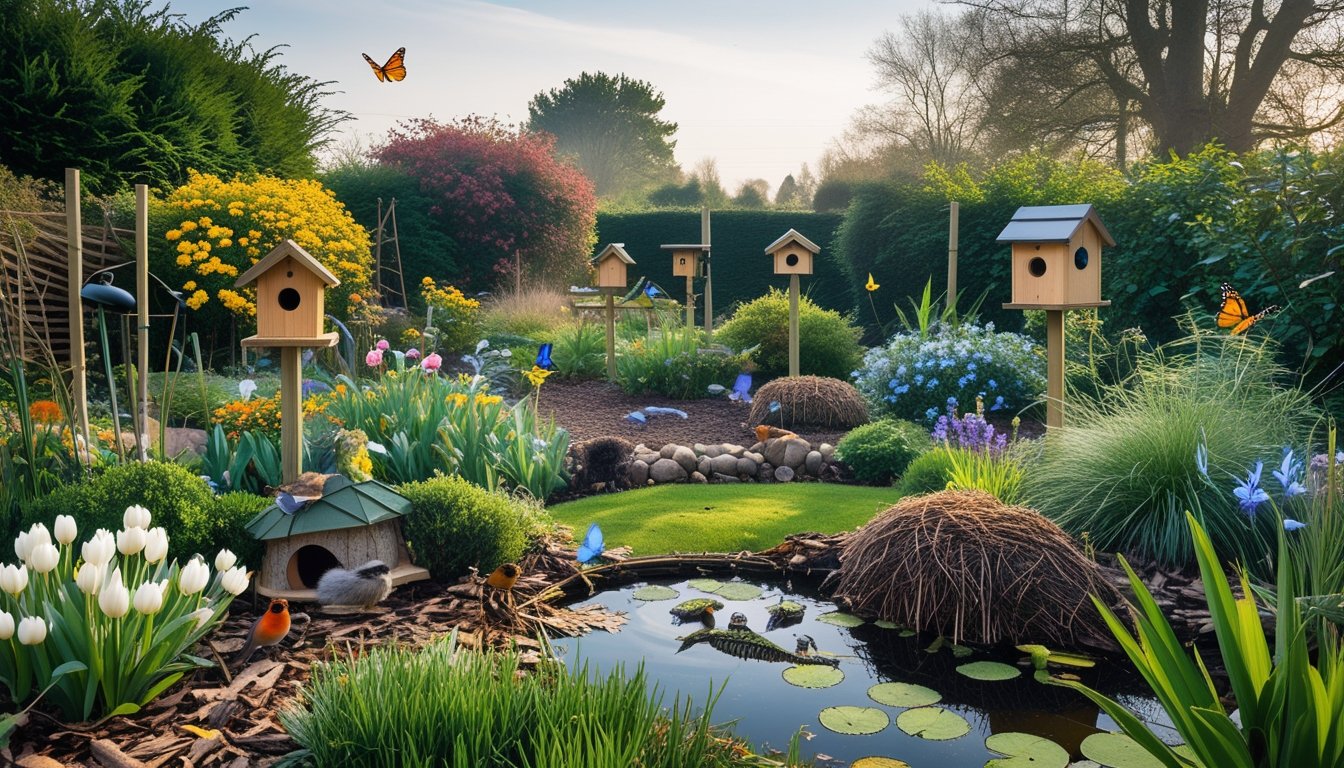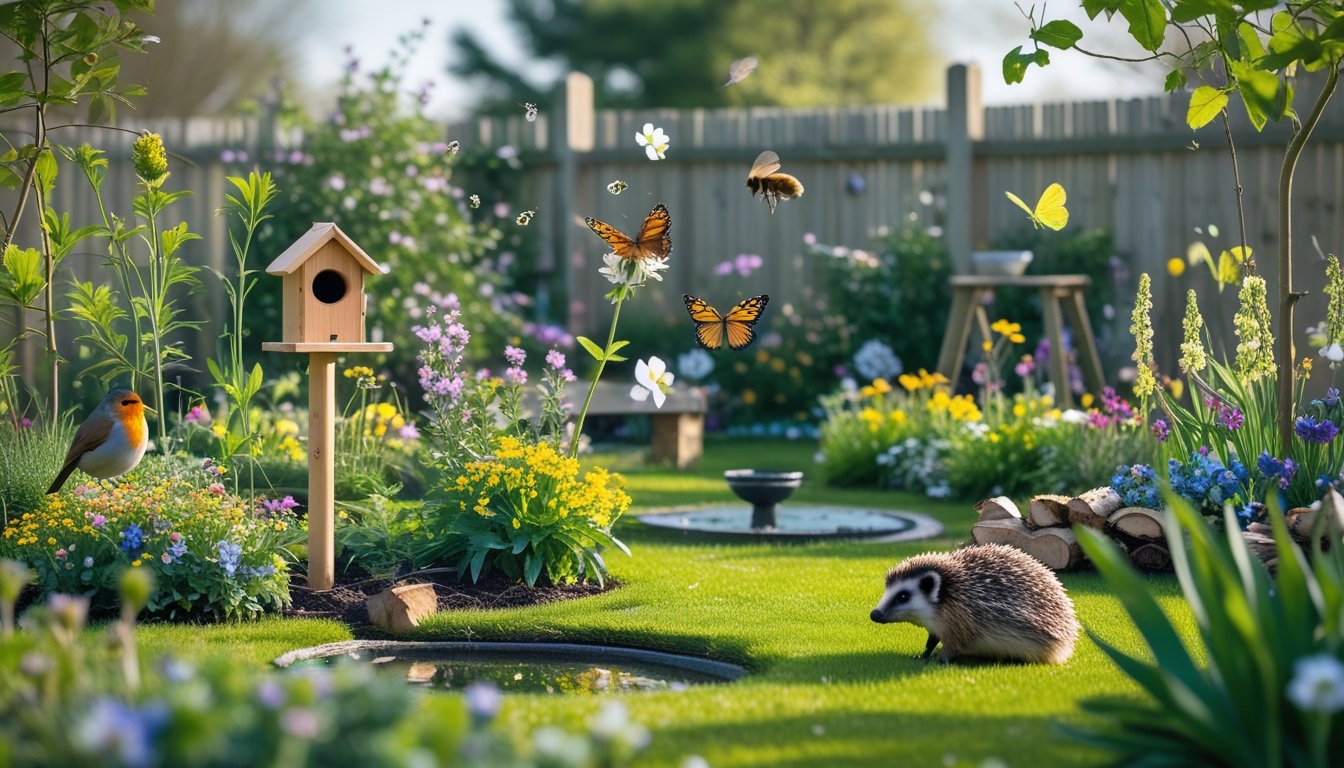Late updated: 15 Oct 2025 08:10
Written by: Emily Thornton
Designing A UK Garden For Seasonal Wildlife Visitors: Tips and Techniques
In the vibrant world of British gardens, transforming your outdoor space into a haven for seasonal wildlife visitors offers a dual reward: the charm of thriving biodiversity coupled with the beauty of a well-curated landscape. One of the most effective strategies to achieve this is by selecting native plant species that naturally attract a diverse range of wildlife throughout the year. As urbanisation continues to encroach on natural habitats, our gardens hold the potential to support various creatures, from hedgehogs to songbirds and fascinating insects.

A garden that caters to wildlife thrives on diversity, both in plant life and in design elements. Incorporating water features, such as ponds and birdbaths, can drastically increase the number of seasonal visitors. These features not only attract animals seeking hydration and food sources but also provide an appealing visual element for us to enjoy. Furthermore, a balanced use of organic gardening practices ensures that while supporting wildlife, we maintain an environment that is healthy and sustainable.
Whether you're starting from scratch or enhancing an existing garden, understanding the specific needs of wildlife during different seasons can guide your design decisions. By creating habitats that cater to each season, we can ensure our garden remains a dynamic sanctuary for wildlife visitors all year long. This not only enriches our personal experience but also contributes positively to the broader ecosystem.
Key Takeaways
- Native plants attract diverse wildlife.
- Water features draw seasonal visitors.
- Organic practices support sustainable ecosystems.
Key Principles Of Designing A UK Garden For Seasonal Wildlife Visitors

Creating a garden tailored for seasonal wildlife visitors in the UK requires a thoughtful approach, focusing on biodiversity, ecological principles, and aesthetic considerations. Each component plays a vital role in transforming your outdoor space into a haven for wildlife throughout the year.
Assessing Your Garden’s Potential For Wildlife
To begin, we need to evaluate the existing features of our garden. By examining current vegetation, soil quality, and available water sources, we can determine the habitat potential. Establishing a survey of native plant and animal species aids this process.
A site survey is crucial. We identify the strengths and limitations before making any design changes. Biodiversity increases as we adapt existing structures to support a wider array of species. Transforming a portion of the lawn into wildflower meadows can attract pollinators.
Furthermore, topographical features like slopes and natural water flow impact how we plan for seasonal wildlife. By considering these elements, we create an adaptable space that reflects natural ecological systems.
Understanding Seasonal Biodiversity And Species Needs
Recognising the diverse array of species that visit throughout the seasons is essential. We must consider how different species have unique needs, and how those can change with the seasons. For instance, birds may require nesting spaces in spring, while later seeking food-rich environments.
Careful selection of plants ensures year-round food sources. Berries, nuts, and seeds should be available as seasonal resources. Diversity in plant height and density can also accommodate various animal species, providing shelter and breeding grounds.
Awareness of climate's influence on seasonal species patterns informs our choices. By observing fluctuations in temperature and weather, we can predict visitor patterns and adjust our garden accordingly. Providing different microhabitats caters to a multitude of species.
Balancing Aesthetic Considerations With Wildlife Requirements
While designing for wildlife, we must also consider visual appeal. Harmonising aesthetics with ecological needs creates a pleasing and functional environment. Native plants can match our garden's style while offering ecological benefits.
Landscape design should incorporate structural features that are both beautiful and practical. For example, incorporating low walls or hedges can define spaces and serve as protective habitats. The challenge lies in achieving a natural balance where both beauty and biodiversity coexist.
Using ornamental elements like stone paths or water features enhances the garden's look while providing resources for wildlife. This dual-purpose approach creates a cohesive and vibrant space that attracts visitors both human and wild.
Essential Features To Attract And Support Wildlife Throughout The Year

Creating a garden that supports wildlife all year round involves strategically incorporating various elements such as diverse plantings and specially designed habitats. These features help maintain ecological balance, providing food, shelter, and nesting opportunities.
Planting For Pollinators And Wildflowers
Planting native wildflowers is crucial for attracting pollinators like bees and butterflies. A variety of nectar-rich plants ensures food availability from spring through autumn. Specific species, such as lavender and foxgloves, are fantastic for attracting a range of pollinators.
Establishing a wildflower meadow can further enhance biodiversity, offering an array of habitats and feeding opportunities. By selecting plants that bloom at different times, we ensure continuous support for pollinators throughout the seasons.
Creating Habitats For Amphibians And Reptiles
Amphibians such as frogs, toads, and newts benefit significantly from the inclusion of a water source, like a wildlife pond or mini pond. These areas should have gentle slopes and plenty of aquatic plants to provide shelter and breeding sites.
Log piles are another excellent feature, offering shaded, cool retreats suitable for both amphibians and reptiles. These simple structures can mimic natural woodland habitats, providing cover and hunting grounds while supporting the garden's ecological diversity.
Providing Shelter And Nesting For Birds And Mammals
To attract a variety of birds and mammals like hedgehogs, incorporating elements that provide shelter and nesting opportunities is essential. Nesting boxes for birds and bat boxes can be placed at different heights to support diverse species.
In addition, ensuring our garden has hedge rows or dense shrubs offers a safe, natural environment for small mammals. Establishing piles of leaves or specially designed hedgehog homes offer critical cover, helping to maintain healthy wildlife populations all year.
Frequently Asked Questions

In designing a UK garden for seasonal wildlife visitors, choosing the right native plants, constructing wildlife-friendly ponds, and providing suitable shelter are essential. Feeding stations must cater to the dietary needs of various species, and garden features should be designed to withstand extreme weather conditions.
What native plants should I include in my garden to attract wildlife throughout the year?
Incorporate a mix of native wildflowers and shrubs that bloom in different seasons to provide a continual food source. Consider plants like hawthorn and ivy, which offer food and shelter to many species. Such plant diversity ensures a home for insects, birds, and other wildlife throughout the year.
How can I create a wildlife-friendly pond that caters to different species in each season?
Design the pond with varying depths and gentle sloping edges to accommodate frogs, dragonflies, and birds. Incorporate native aquatic plants and leave some pond edges muddy for amphibians. This setup will provide habitat and sustenance for different species as they visit at various times of the year.
What type of shelter can I provide to support diverse wildlife visitors in my garden?
Use log piles, rockeries, and hedgehog houses as natural shelters. These features offer rest and refuge to many creatures. Nesting boxes tailored for specific bird species and bat boxes can play a vital role in a thriving ecosystem, especially during breeding seasons.
How should I structure feeding stations to accommodate seasonal dietary needs of garden wildlife?
Vary feeding stations with seed feeders in winter and fruit or nectar stations in summer. Provide fat balls and nuts to help wildlife survive during cold months. By understanding the dietary requirements of different wildlife through the seasons, we ensure they have the needed resources.
Which perennial plants are best suited for sustaining insects and birds during the changing seasons?
Select perennials like lavender and echinacea for summer nectar, and holly or pyracantha for winter berries. These ensure a reliable food source throughout the year. They support a host of insects and birds, providing both nourishment and habitat.
How can I ensure my garden’s features are safe for wildlife during winter frosts and summer heat?
Use mulch to protect plant roots, provide shaded areas with native trees, and ensure ponds have steps for easy escape if wildlife falls in. Creating windbreaks and planting drought-resistant species can help gardens withstand seasonal extremes, keeping inhabitants safe and healthy.
